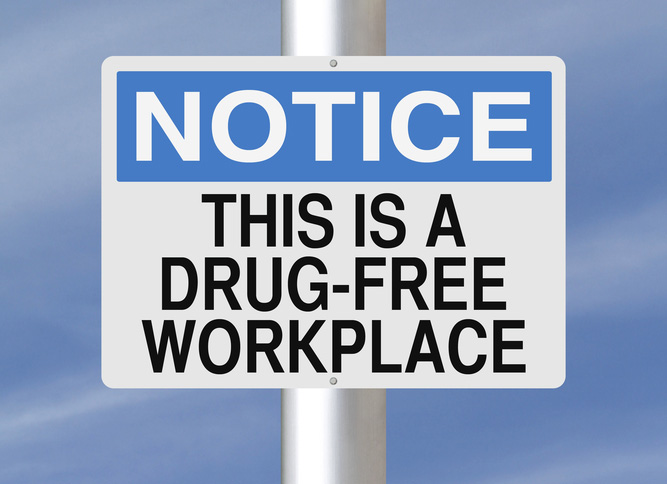With 23 states and the District of Columbia having legalized theuse of medical marijuana, employers and insurance companies arewondering if they soon may be asked to cover medical marijuana aspart of their workers’ compensation claims. Although there is nodefinitive answer right now, it’s important to shed light on thevarious issues affecting the use of medical marijuana in workers’compensation.
|Currently, there are several factors hindering adoption:
|1. Illegal atfederal level. The ControlledSubstances Act (CSA) of 1970 classifies marijuana as a Schedule Isubstance, making it illegal to cultivate, distribute or possessthe drug.
|2. No FDAapproval. Medical marijuana is notviewed as safe or effective by the U.S. Food & DrugAdministration (FDA).
|3. Lack of proofof efficacy. Current literaturedocuments various uses of medical marijuana, but a large-scalerandomized and controlled human clinical trial has not yet beenconducted to verify these benefits.
|
(Photo: Shutterstock/rnl)
|4. Evidence-basedguidelines. In workers’ compensation, payers rely onevidence-based guidelines when making treatment decisions.Currently, medical marijuana is not included in any workers’compensation treatment guidelines, such as the Official DisabilityGuidelines (ODG) and the American College of Occupational &Environmental Medicine (ACOEM) Practice Guidelines—which areconsidered the gold standards in the treatment of occupationalinjuries. As a result, many payers are choosing to categoricallydeny coverage.
|5. Effect on workperformance. There are potential risks in coveringmedical marijuana. Although effects differ by individual and aredependent on frequency of use and dosage, studies show thatmarijuana can impair cognition, balance and coordination, decreasealertness and delay reaction time. These effects pose safetyhazards, especially when users operate heavy machinery or drivevehicles. According to the National Institute on Drug Abuse,marijuana also has the potential to cause or exacerbate problems indaily life, and increase absences, tardiness, accidents and jobturnover.
|6. Drug-free workplaceprograms. Under federal Drug-FreeWorkplace Programs, employers who receive federal funds mustestablish a comprehensive program to address illicit drug use inthe workplace and can use random drug tests to identify users.Other businesses can choose to institute a zero-tolerance drugpolicy. This can create a scenario like the case of Coats v.Dish Network in Colorado. Brandon Coats became a quadriplegicin a car accident and used medical marijuana to control leg spasms.In 2010, due to off-duty medical marijuana use, he failed a randomdrug test and was fired. On June 15, 2015, the Colorado SupremeCourt upheld the right for businesses to fire employees for medicalmarijuana use—even if it occurred while off duty.
|[Related: Employees' medical marijuana use not protectedunder state law says Colorado Supreme Court]
|
(Photo: Shutterstock/Lightspring)
|Issues favoring medical marijuana
|Although the factors listed previously are strong indicationsthat medical marijuana won’t become a standard of care any timesoon, there are several suggestions that the climate issimultaneously ripe for change:
|1. Possible alternative forpain management. According to theInstitute of Medicine, chronic pain affects about 100 million U.S.adults. Pain treatment costs up to $635 billion each year intreatment and lost productivity, and the use of opioid prescriptionpainkillers often leads to abuse, with more than 16,000 relateddeaths in 2010.
|Studies have shown positive results for medical marijuana’sability to relieve pain; however, the studies were small in scale.Other studies showed synergistic effects when using marijuana withopioids, which could lower opioid dosage and abuse. Many proponentsbelieve clinical trials should be allowed to proceed, letting theevidence speak for itself.
|[Related: Workers injured in construction, manufacturing athighest risk for prescription painkiller abuse]
|2. New Mexico courtruling. In certain cases, courtrulings may force employers and carriers to cover medical marijuanaas treatment. In a New Mexico case (Miguel Maez v. RileyIndustrial and Chartis), a court ruled that the workers’compensation insurance company had to reimburse an injured workerfor medical marijuana.
|Miguel Maez, a 55-year old former mechanic, suffered backinjuries in February and March 2011, while working for RileyIndustrial Services Inc. In 2012 and 2013, the doctor authorized alicense for Mr. Maez to use medical marijuana after traditionalmedical therapies, including spinal anti-inflammatory injectionsand opioids—such as Percocet, oxycodone, and hydrocodone—failed totreat the patient’s chronic back pain and herniated disk.
|On January 13, 2015, the New Mexico Court of Appeals decided thestate’s “compassionate use” law would allow the medical marijuanaauthorization to be treated as a prescription. The ruling toreimburse the injured worker arguably allowed the carrier to avoiddirectly paying for an illegal drug.
|3. Strong support in nationalpolls. In national polls, a growing majority ofAmericans—as high as 78%—believe that medical marijuana with aphysician’s recommendation should be legal.
|
(Photo: Shutterstock/Lightspring)
|4. Proposed bills to changeclassification. There are severalbills currently being proposed in Congress to change marijuana’sclassification. The CARERS Act proposed by Sen. Rand Paul (R-Ky.),Sen. Cory Booker (D-N.J.), and Sen. Kirsten Gillibrand (D-N.Y.)would allow patients, including veterans, to access necessary carewithout fear of federal prosecution. The act would recognize thestate’s responsibility to set medical marijuana policy andreschedule marijuana from a Schedule I to Schedule II substance,recognizing that it has “accepted medical use.” It also wouldpermit financial services and banking for marijuana dispensaries,and expand opportunities for research.
|Another bill proposes that marijuana be regulated similar toalcohol, removing it from the Controlled Substances Act’sschedules. Oversight of marijuana would then be transferred fromthe Drug Enforcement Administration to the Bureau of Alcohol,Tobacco, Firearms and Explosives.
|5. Tax revenue. Instates in which marijuana is legalized, a significant amount of taxrevenue is now being collected, which could entice more states andthe federal government to move toward legalization. For example inColorado, where marijuana is legalized for medical and recreationaluse, tax revenues totaled $69 million in 2014.
|6. Reasonable andnecessary. In most states, the law says workers’compensation must cover what’s reasonable and necessary, as well asproven to be “efficacious.” Most insurance companies currently takethe position that medical marijuana has not been conclusively foundto be an effective treatment. There may be cases in which use isacceptable, however. For example, an employee with work-relatedcancer could have a doctor authorize marijuana to stimulateappetite during chemotherapy. This claimant would have a goodchance of having medical marijuana deemed a reasonable andnecessary part of treatment—and covered under workers’compensation.
|
(Photo: Shutterstock/iQoncept)
|Best practice framework
|It’s important to become aware of the factors on both sides ofthe medical marijuana issue. But employers can take some actionsnow to deal with the issue, regardless of whether medical marijuanais legal in the states in which they have employees. All employersshould:
- Review their employee handbooks and personnelpolicies with legal counsel and human resource professionals—andclearly communicate expectations regarding medical marijuana totheir workers.
- Collaborate with insurers, third-partyadministrators, and pharmacy benefit managers to establish workers’compensation policies, and equip claims handlers with standards forreview, rather than leaving them to use personal judgment.
- Stay abreast of new cases, judgments andverdicts—as well as public and political trends—that could forecasta tipping point toward change and reclassification.
Kevin Glennon, RN, BSN, CWCP, is vice president of ClinicalEducation & Quality Assurance Programs at One Call CareManagement, where he applies his clinical expertise to helporganizations achieve best-possible costs and outcomes on complexinjury claims.
Want to continue reading?
Become a Free PropertyCasualty360 Digital Reader
Your access to unlimited PropertyCasualty360 content isn’t changing.
Once you are an ALM digital member, you’ll receive:
- All PropertyCasualty360.com news coverage, best practices, and in-depth analysis.
- Educational webcasts, resources from industry leaders, and informative newsletters.
- Other award-winning websites including BenefitsPRO.com and ThinkAdvisor.com.
Already have an account? Sign In
© 2024 ALM Global, LLC, All Rights Reserved. Request academic re-use from www.copyright.com. All other uses, submit a request to [email protected]. For more information visit Asset & Logo Licensing.








